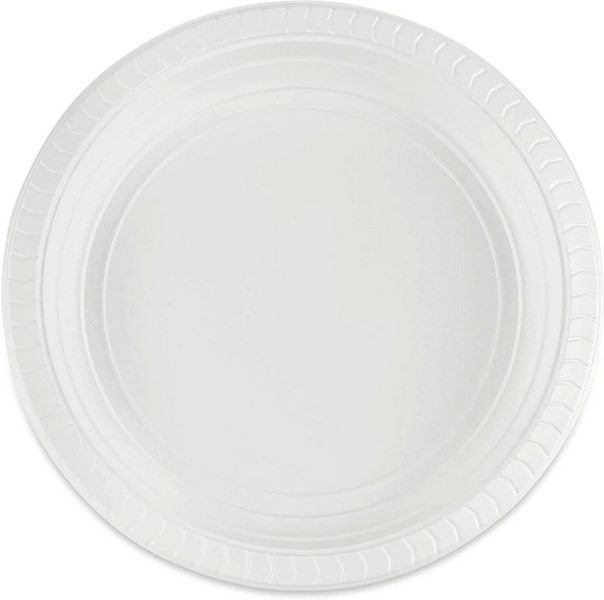
Content Menu
● Understanding Disposable Plates
● Types of Disposable Plates
>> Plastic Plates
>> Paper Plates
>> Bamboo Plates
>> Palm Leaf Plates
>> Bagasse Plates
● Environmental Impact of Disposable Plates
>> Waste Generation
>> Resource Consumption
>> Pollution
● Are Disposable Plates Truly Consumable?
● Alternatives to Traditional Disposable Plates
>> Compostable Options
>> Recyclable Materials
>> Reusable Alternatives
● Conclusion
● FAQ
>> 1. What are the most common materials used for disposable plates?
>> 2. Are there eco-friendly options for disposable plates?
>> 3. How long does it take for disposable plastic plates to decompose?
>> 4. Can I recycle paper plates?
>> 5. Are there health concerns associated with using disposable plates?
● Citations:
Disposable plates have become an integral part of modern dining, especially in settings that prioritize convenience and hygiene. They are widely used at parties, picnics, and various events where traditional dishware might be impractical. However, the question arises: are disposable plates truly consumable? This article delves into the nature of disposable plates, their materials, environmental impact, and whether they can be classified as consumables.

Understanding Disposable Plates
Disposable plates are designed for single use, meaning they are intended to be thrown away after one meal. This characteristic distinguishes them from reusable dinnerware, which is washed and used multiple times. The convenience of disposable plates is appealing for many reasons:
- Time-Saving: No need for washing dishes after meals.
- Hygienic: Each guest receives a clean plate, reducing the risk of cross-contamination.
- Versatile: Suitable for various occasions, from casual gatherings to formal events.
Types of Disposable Plates
Disposable plates come in various materials, each offering unique advantages and disadvantages. Here's a breakdown of the most common types:
Plastic Plates
- Material: Typically made from polystyrene or polypropylene.
- Pros: Durable and resistant to moisture; ideal for hot and heavy foods.
- Cons: Environmental concerns due to difficulty in recycling and long decomposition times.
Paper Plates
- Material: Made from food-grade paper or cardboard, often coated for moisture resistance.
- Pros: Biodegradable and compostable; more environmentally friendly than plastic.
- Cons: Can become soggy with wet or greasy foods.
Bamboo Plates
- Material: Made from fast-growing bamboo, which is sustainable.
- Pros: Eco-friendly, sturdy, and compostable.
- Cons: Generally more expensive than plastic or paper options.
Palm Leaf Plates
- Material: Made from fallen palm leaves.
- Pros: 100% natural, compostable, and sturdy for both hot and cold foods.
- Cons: Higher cost compared to traditional disposable options.
Bagasse Plates
- Material: Made from sugarcane pulp after the juice has been extracted.
- Pros: Biodegradable and compostable; sturdy enough for various foods.
- Cons: May not hold up as well under heavy or liquid foods compared to plastic.

Environmental Impact of Disposable Plates
The environmental implications of disposable plates are significant. While they offer convenience, their production and disposal can lead to various ecological issues:
Waste Generation
Most disposable plates end up in landfills, contributing to waste accumulation. Plastic plates can take hundreds of years to decompose, breaking down into microplastics that pollute the environment. Paper plates are more biodegradable but still contribute to landfill waste if not properly composted[1][2].
Resource Consumption
The production of disposable plates requires natural resources such as trees (for paper) or fossil fuels (for plastic). This consumption can lead to deforestation and depletion of non-renewable resources[1][3].
Pollution
Manufacturing processes for disposable plates can emit greenhouse gases and other pollutants. Additionally, improper disposal can lead to pollution of soil and waterways[1].
Are Disposable Plates Truly Consumable?
The term "consumable" typically refers to items that are intended to be used up completely—like food or beverages. In this context, disposable plates can be considered consumables because they are designed for single use and discarded after consumption. However, their classification as consumables raises some concerns:
- While they provide convenience during events or gatherings, their environmental footprint cannot be ignored.
- Many disposable plates are made from materials that do not decompose easily or contribute positively to the environment post-use.
Alternatives to Traditional Disposable Plates
With growing awareness about environmental issues, many consumers are seeking alternatives that offer both convenience and sustainability:
Compostable Options
Choosing compostable plates made from materials like bamboo or palm leaves can significantly reduce environmental impact. These options break down naturally without leaving harmful residues behind[1][6].
Recyclable Materials
Some manufacturers produce recyclable plastic plates. However, it is essential to check local recycling guidelines as not all types of plastic are accepted[2][9].
Reusable Alternatives
For those looking to minimize waste entirely, investing in reusable dinnerware may be the best option. While this requires more effort in terms of cleaning, it significantly reduces waste generation over time[7].
Conclusion
In conclusion, while disposable plates serve as convenient consumables for many events and gatherings, their environmental impact raises important questions about sustainability. As consumers become more aware of these issues, there is a noticeable shift towards eco-friendly alternatives that balance convenience with ecological responsibility.

FAQ
1. What are the most common materials used for disposable plates?
Disposable plates are commonly made from plastic (polystyrene), paper (food-grade), bamboo, palm leaves, and bagasse (sugarcane pulp).
2. Are there eco-friendly options for disposable plates?
Yes! Eco-friendly options include bamboo plates, palm leaf plates, and bagasse plates which are biodegradable and compostable.
3. How long does it take for disposable plastic plates to decompose?
Plastic plates can take hundreds of years to decompose fully in landfills.
4. Can I recycle paper plates?
Yes, but only if they are not contaminated with food grease or residues. Clean paper plates can often be recycled or composted.
5. Are there health concerns associated with using disposable plates?
Some disposable paper plates may contain PFAS chemicals linked to health risks. It's advisable to choose products labeled as free from these substances[2][8].
Citations:
[1] https://www.bambuhome.com/blogs/bambuliving/compostable-vs-disposable-plates
[2] https://www.mamavation.com/product-investigations/paper-plates.html
[3] https://karmicseed.com/blogs/posts/various-types-of-disposable-plates-you-can-switch-to-leaving-plastic-plates-behind
[4] https://www.freepik.com/free-photos-vectors/disposable-plate
[5] https://www.youtube.com/watch?v=_qah7wJU3no
[6] https://www.thekayacollection.com/blogs/news/why-use-disposable-plates-convenience-benefits-tips-for-choosing-the-best-ones
[7] https://eventableware.com/a-complete-guide-disposable-plates/
[8] https://smartyhadaparty.com/blogs/home/paper-plates-vs-washing-dishes
[9] https://smartyhadaparty.com/blogs/home/plastic-vs-paper-plates-which-is-better
[10] https://www.ecoleafproducts.co.uk/pages/disposable-plates-questions

















